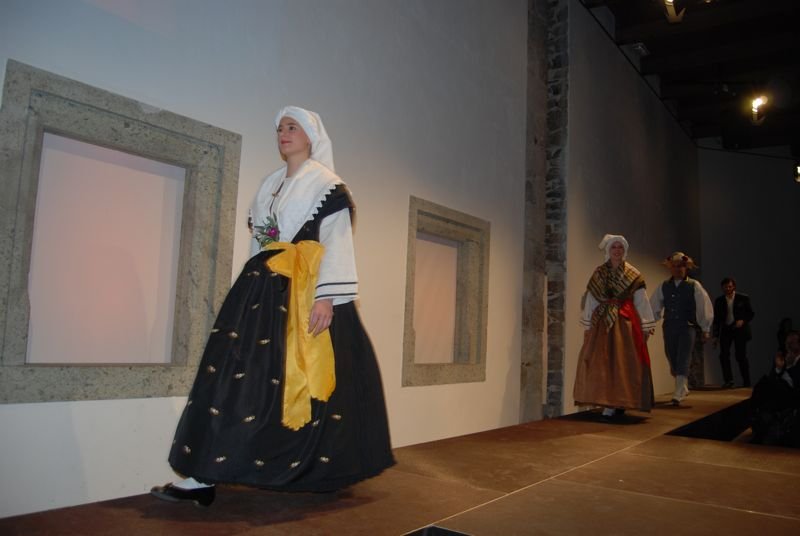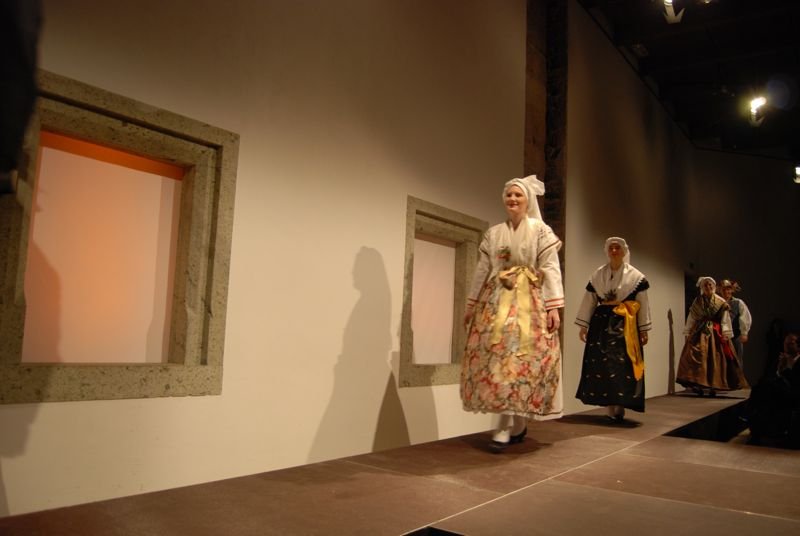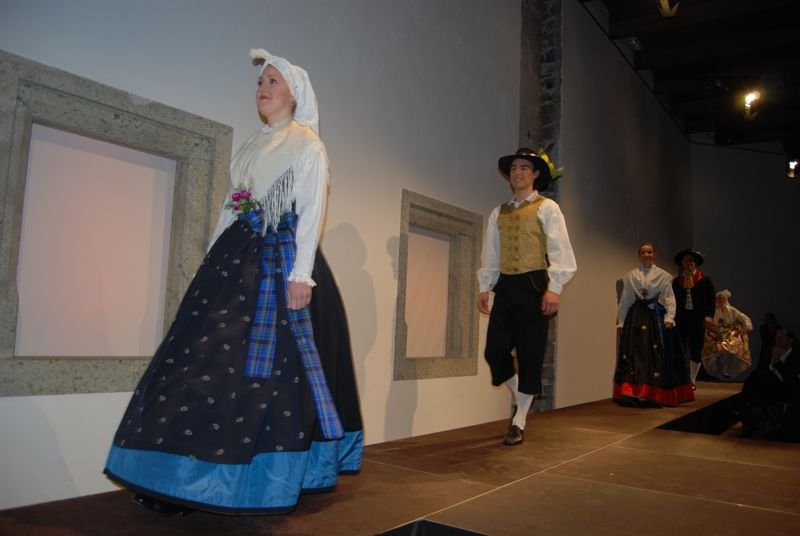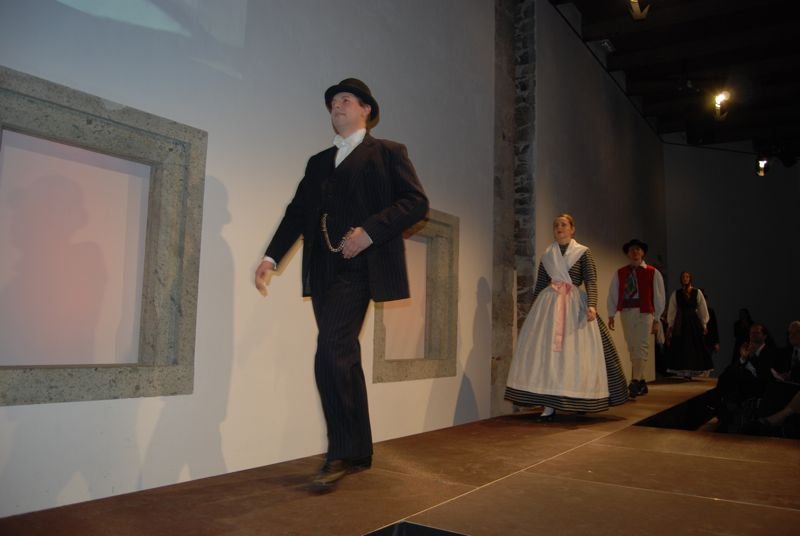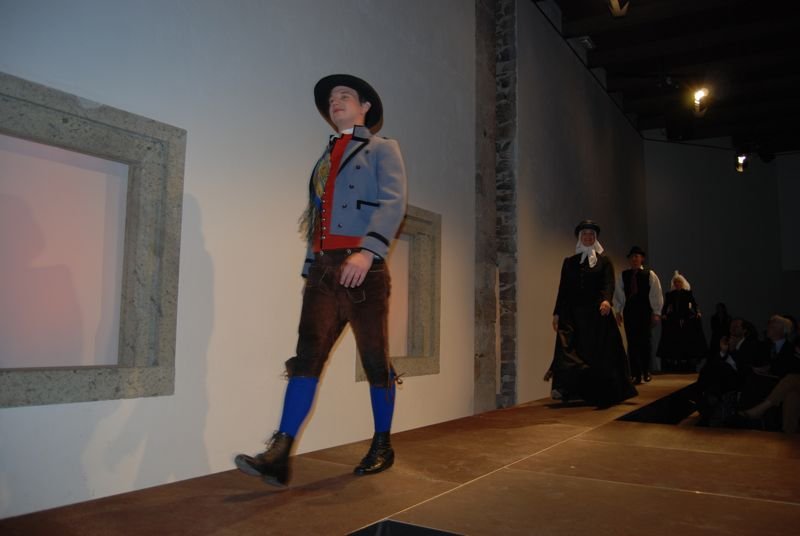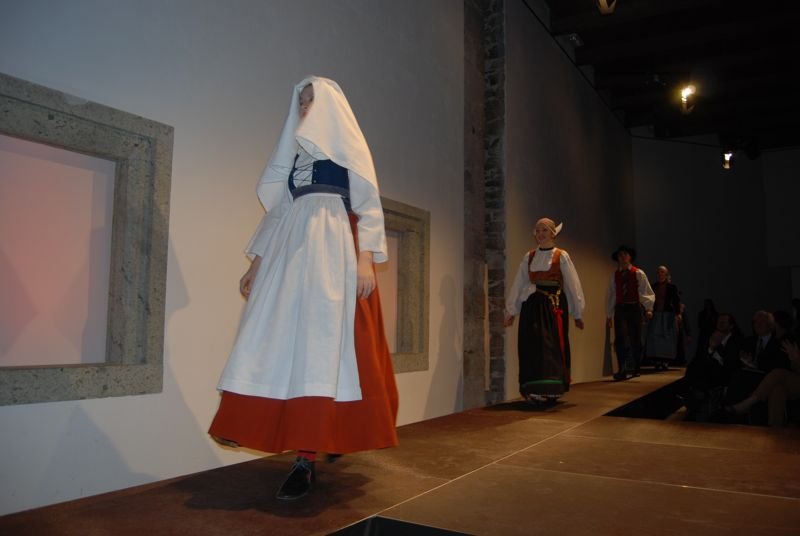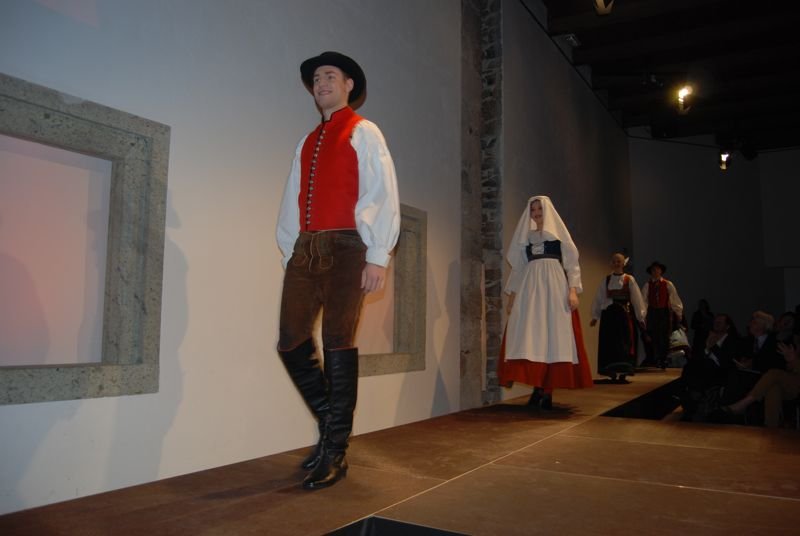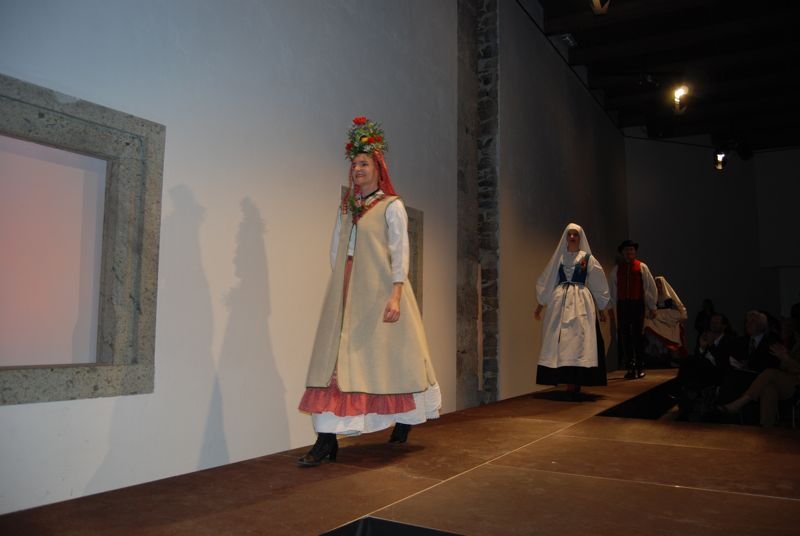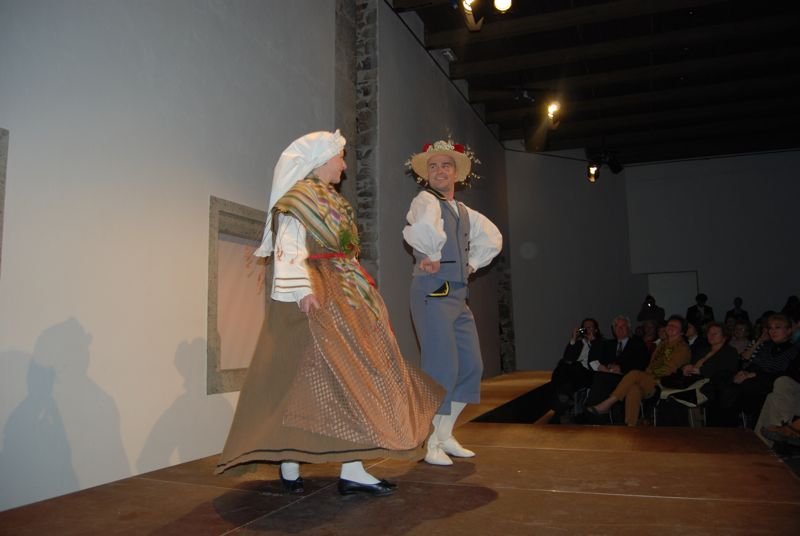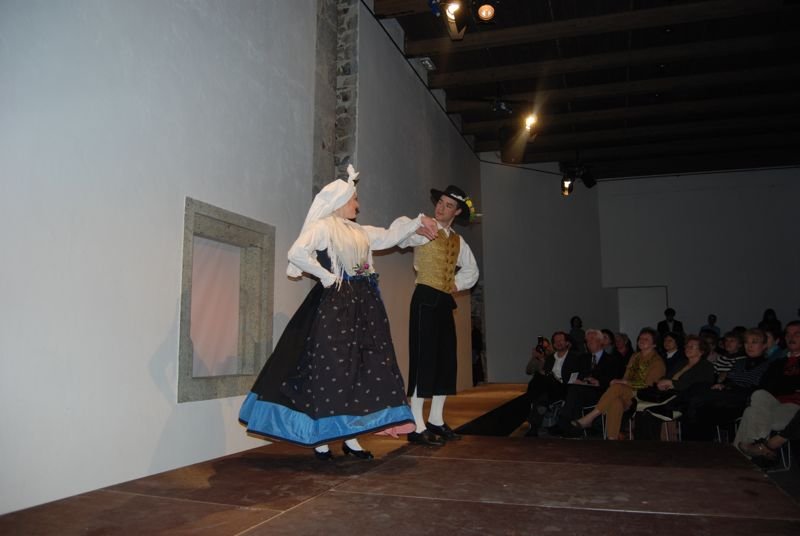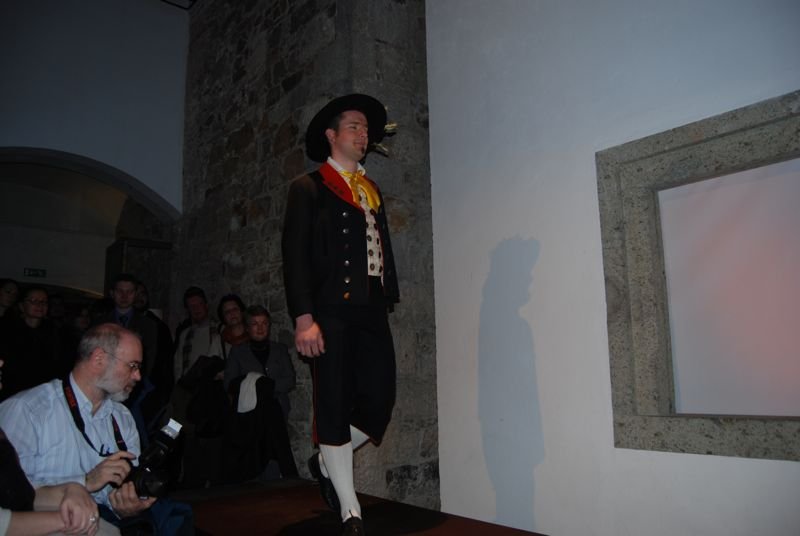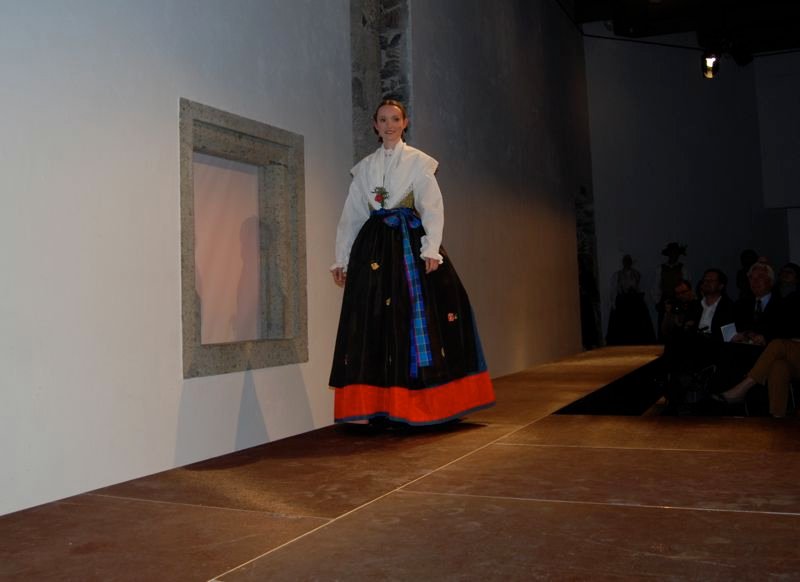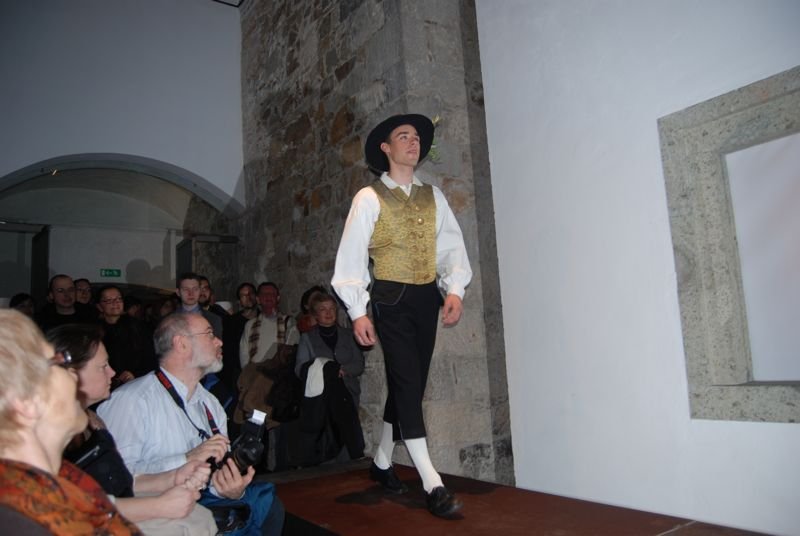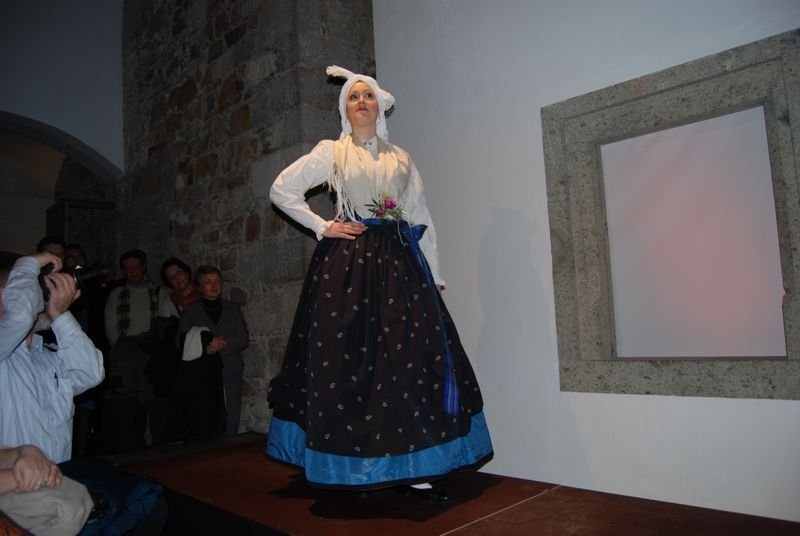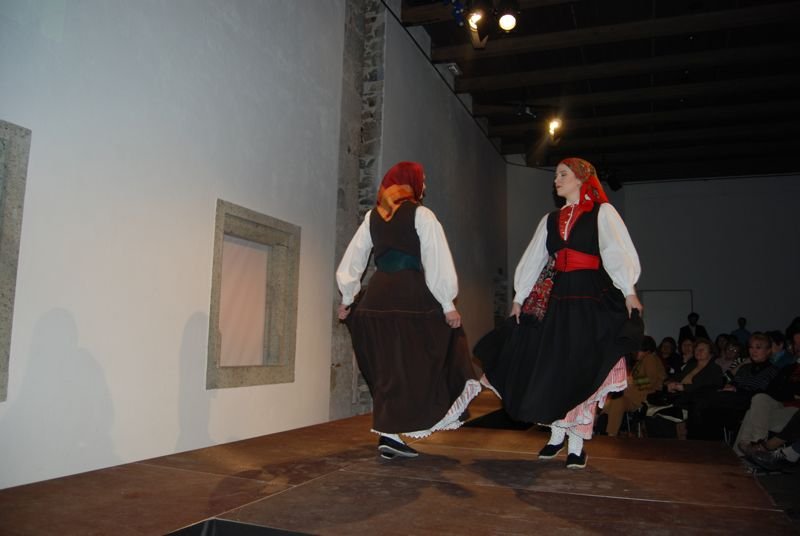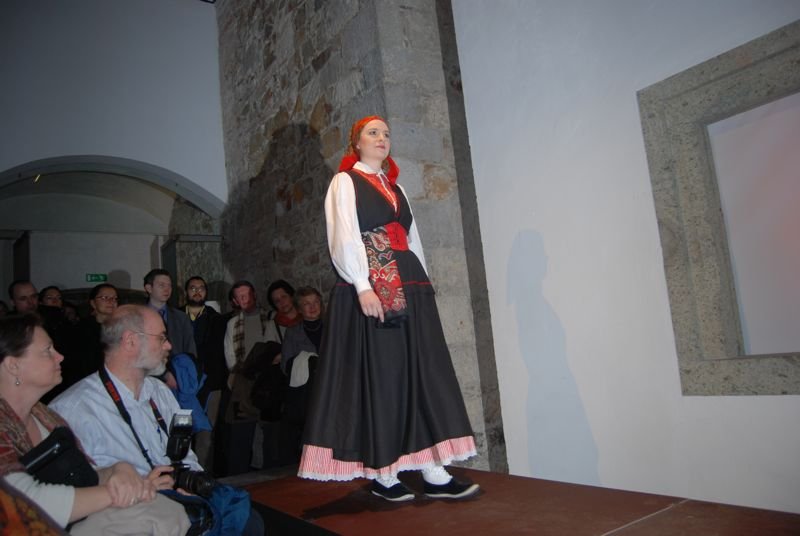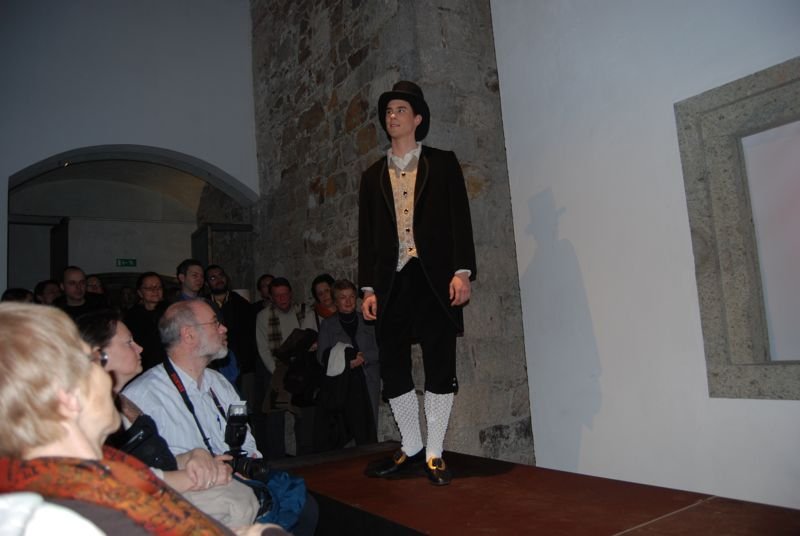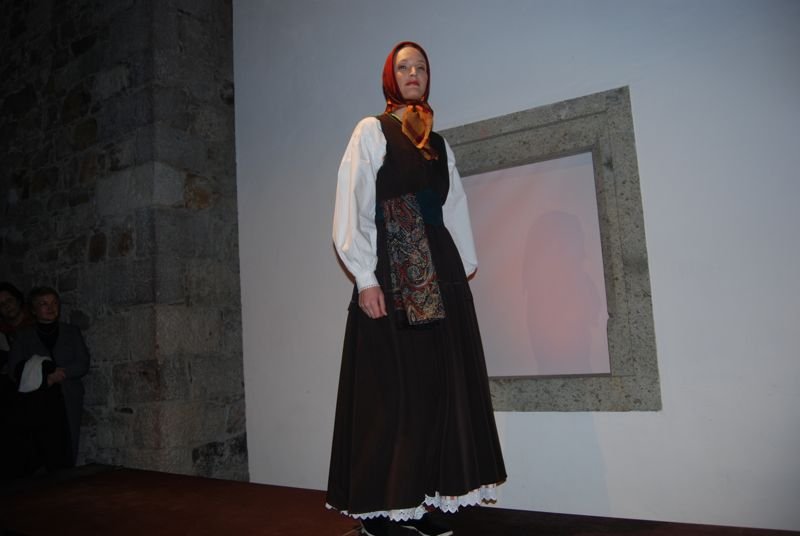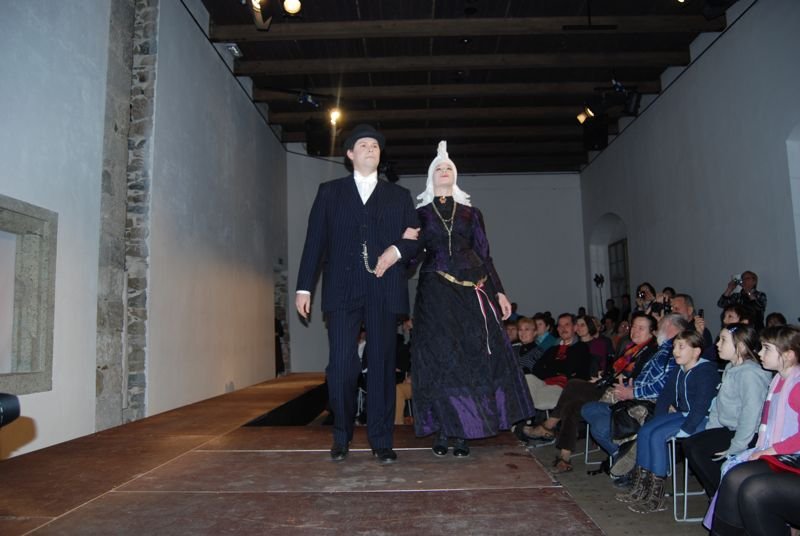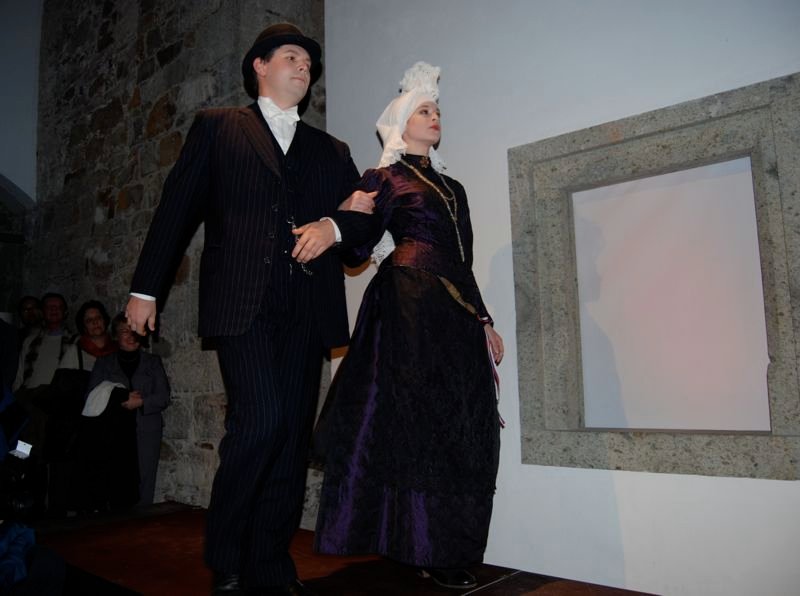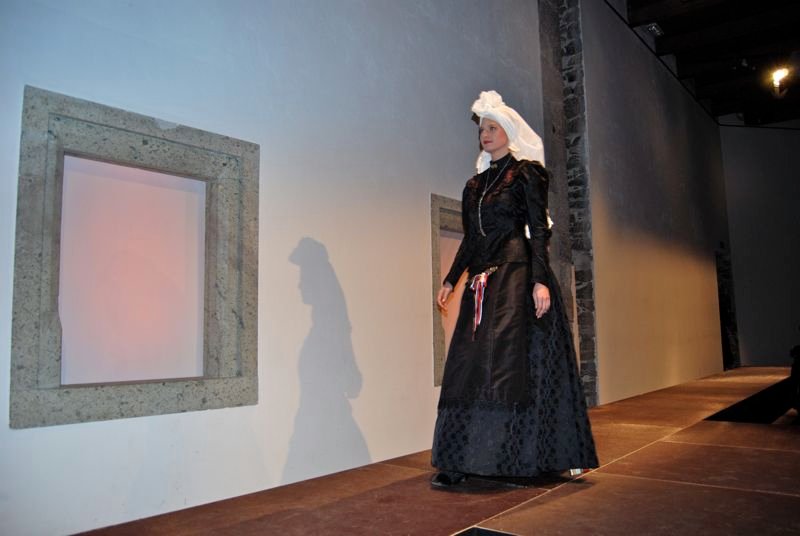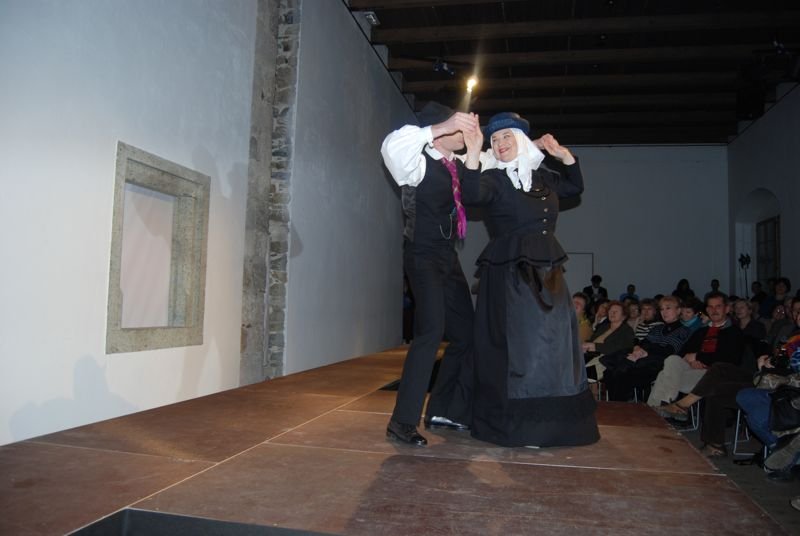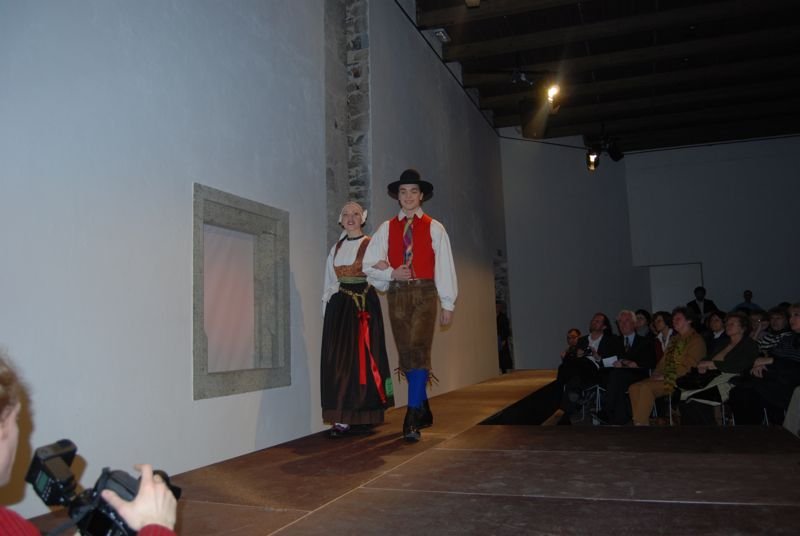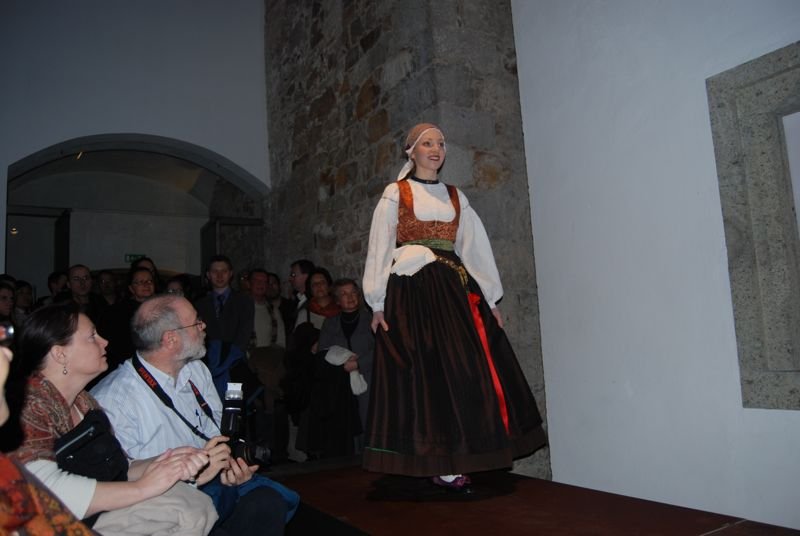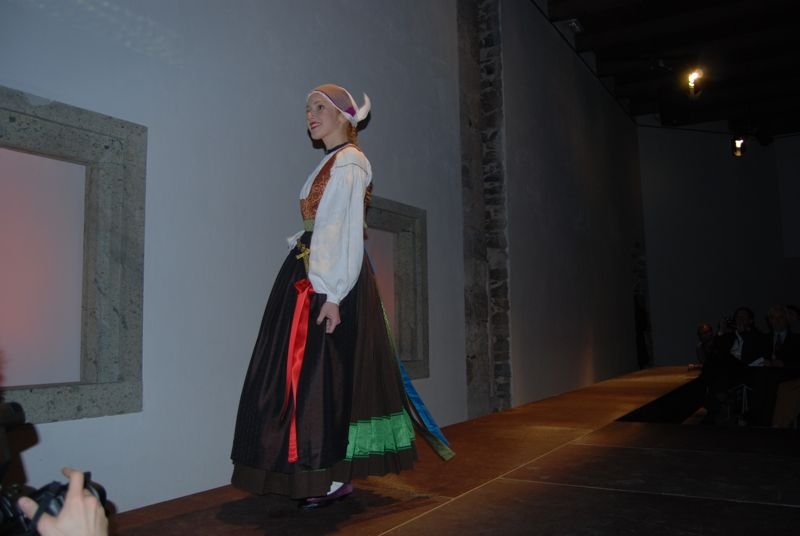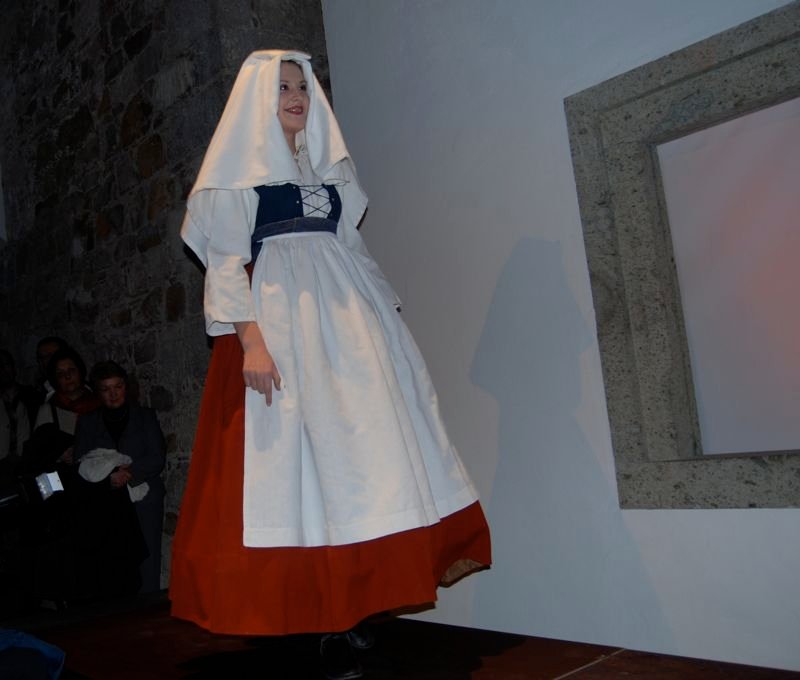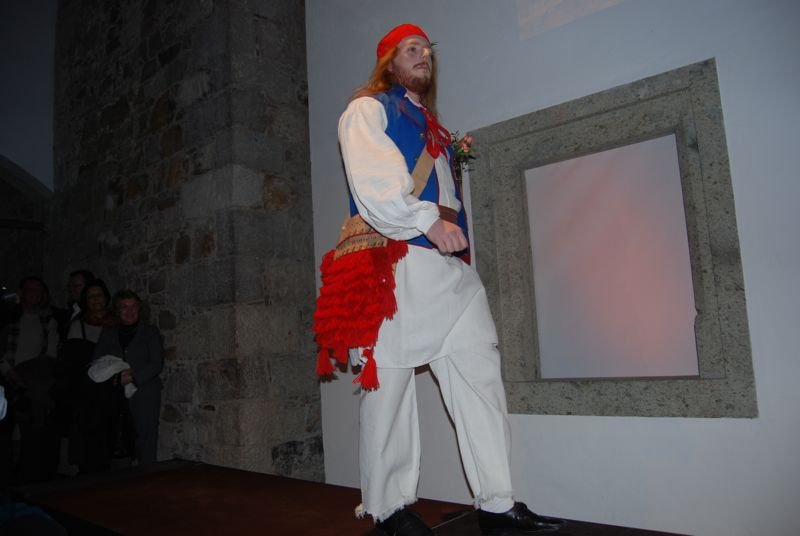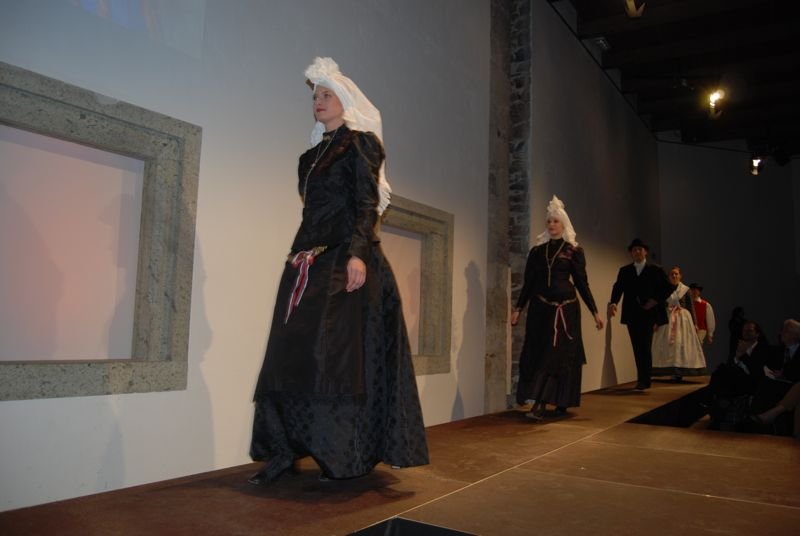
Clothes worn by the country people in Slovenian Lands till the start of 20th century
Mankind had discovered weaving far back in the history of mankind. Embroidery and embellishment of clothes with a needle was known thousands of years ago. Simple lace can be already found on Egyptian clothes.
With the evolvement of society from slavery to feudalism to capitalism, clothes were also changing and evolving. It has been estimated that there were altogether c. 17 million people in the world at the time of Christ. The earth was fairly empty if we compare with the estimated 7 billion people living on the planet today.
Celts had already sewn together long strips of cloth to form narrow robes. we find remnants of wedge-shaped tailoring by Illyrians and Celts on objects from the Iron Age. The ancient Slavs turned (Sl.”sukati”) narrow woolen strips in water, causing the material to shrink, and so produced cloth (Sl.“sukno”). The expression rolled cloth comes from German verb “waiken” which means to roll (Sl.”valjati”) in water. From the name for this fabric later came the name of the outer garment “suknja” (En. coat), still used in Slovenian today.
Wedge-shaped garment cutting spread in the Middle Ages over the whole of the European clothing fashion. Until the eleventh century the differentiation between various strata of the population was less discernible than later. With growth of the feudal order, the differences in attire also grew. Feudal masters limited the existing rights of country people and prescribed the type of garments they were allowed to wear: dark, grey, coarse linen; they were allowed wedge inserts on the sides, but not in front or at the back. Anyone who broke these rules was punished and harried.
The Slovenian National Costume Show took place in Ljubljana Castle in March 2011. The Marolt Folklore Dancing Company was to honour the work of Ljuba Vrhovec Pribac, who had beside dancing dedicated ten years of her life to research of Slovenian national costumes about mid-19th century, when it was a matter of pride to say,I am Slovenian.She searched for and reconstructed old fashions and refreshed them with new materials and colours. The show in Ljubljana Castle presented a wonderful insight into a past that was colourul, and people enjoyed dressing up and making statement with their clothes. They achieved marvels with the work of their hands. Most of all we must be grateful to Ljuba for resuscitating a world of the past for our pleasure and enjoyment in the present.
After the crusades of the 12th and until the middle of the 13th century, appeared in Europe, apart from cloth and linen, also cotton, fine wool and silk, the last one as the product of oriental textile skills. Desire for wealth and luxurious fabrics led to the highly developed Burgundian fashions of France. This became the concept for the highest form of clothing fashion of the 15th century or the late Middle Ages.
Renaissance is the period of the knights and princesses with pointed head coverings. In between there is the period of Reformation, where in Germany we see the beginning of development of specially women’s shaped head coverings, “avba”. The sixteenth and seventeenth century is also the period of lacy collars.The fashions worn by the lords and ladies of Spain, Russia, Poland, Ukraine, Hungary and Turkey have a special place in this regard. The period of rococo is considered as the height of vanity and ridiculous uncomfortable clothing, that the wealthy indulged in to excess.
The rebellion by the urban middle class against the nobility takes us to the French Revolution of 1789. Napoleon with his military conquests, caused the ideas ‘liberty, equality and brotherhood’, to be sown all over Europe.
Gothic art from fifteenth century, records and depictions from the sixteenth century indicate clothing in Slovenian territories in the late Middle Ages. On the engravings of J.V. Valvasor we can observe, what Slovenes wore in the 17th century. The Baroque manner of dress persisted well into the 18th century and reached its peak in the first half of the nineteenth century, when European dress fashion, shaped by the town circles, begins to reach more intensively into the country.
It is true, Slovenia is placed on the crossroads of the Alpine, Pannonian and Mediterranean word, and is therefore climatically diverse. It is also true that here also the Germanic, Romance and Slavic cultures meet. Add to this the fact that our ancestors lived split among various authorities. Istrians were ruled for 600 years by the Venetian Republic; Goriška, Kranjska, Savinjska, and Štajerska were over 1000 years under the rule of the German dynasty, the Habsburgs, and Prekmurje was under the Hungarian rule.
This is partly reflected by the manner of dress in various regions. Basically, in Slovenian territories three different types of attire were developed: the Pannonian type in Prekmurje, Prlekija and Bela Krajina; the Alpine type in Gorenjska (Upper Carniola), Koroška (Carinthia), Štajerska (Styria), Dolenjska (Lower Carniola), part of Primorska (Slovenian Littoral) and the Mediterranean type in Istria.
In the second half of the 19th century the “national costume” began to take shape, in the wake of the emerging and evolving Slovenian national consciousness. This is man’s or woman’s dress, worn by different strata of the population, demonstrating with their dress that they are Slovenian. The dress designs, that went by the name of “national costume” spread rapidly first of all in Gorenjska, Trst, Škedenj, Bela Krajina and Zila, to be soon followed by the other regions.
With the vigorous development of folklore after the World War II, costumographies are being developed for the needs of folkloric and other cultural groups. We produce reconstructions, stylizations and copies of the originals of the old festive, and more rarely, everyday clothes, and “national costumes”. We are lacking knowledge, patience, and of course resources, to trace and recapture the originals as we would like.
Translated by Aleksandra L. Ceferin


